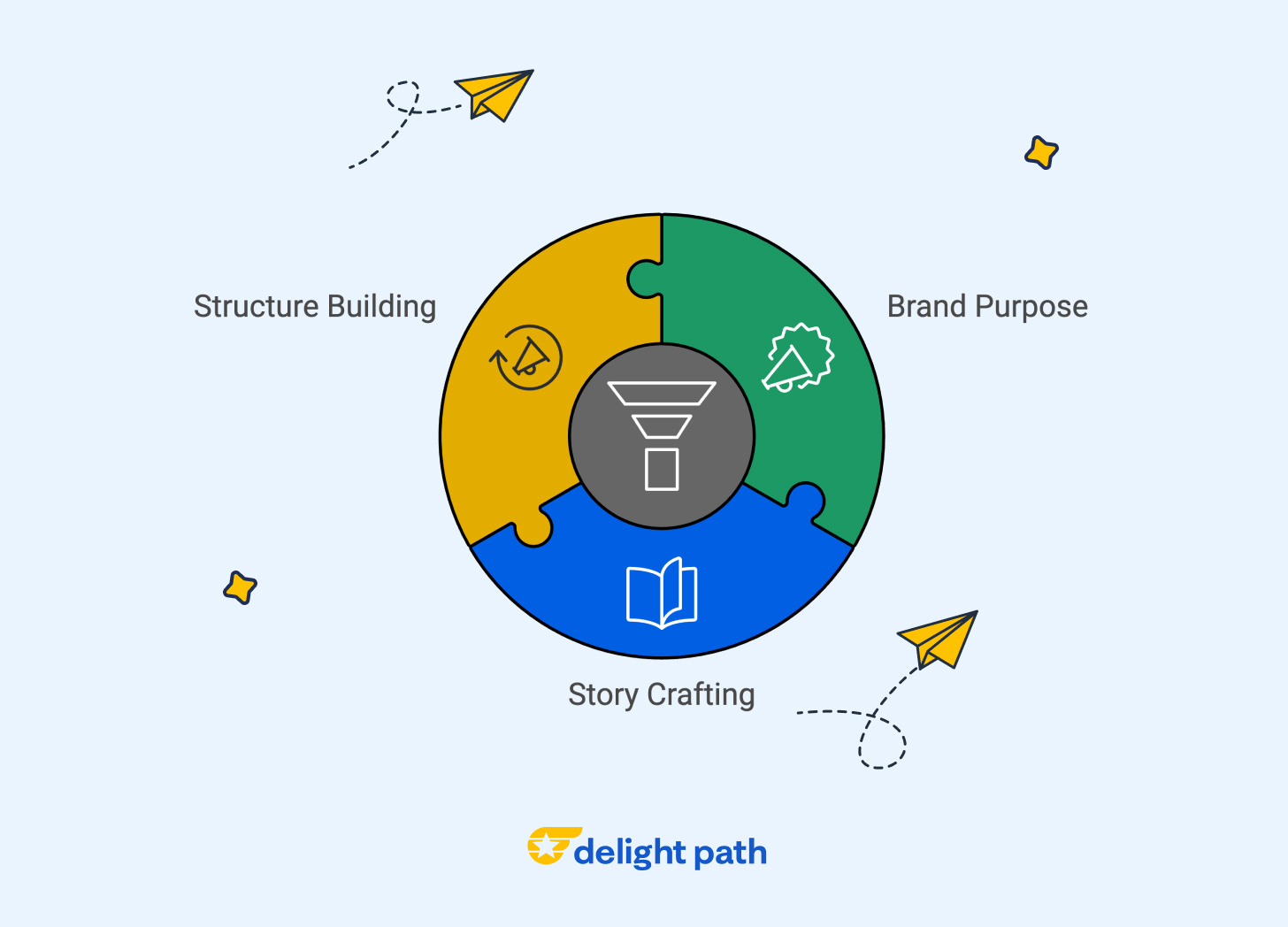The brand storytelling framework
Kevan Lee and Shannon Deep share their 3-step brand storytelling framework.
The companies that tell the most compelling stories are the ones that customers gravitate towards, whether in a B2C context or B2B. And it’s marketing’s job to help bring those stories to life.
To do that, Kevan Lee and Shannon Deep (co-founders of Bonfire) use a 3-step process:
Step 1: Know your brand purpose. 🏆
"Brand purpose is the intersection between a tension out in the culture and the best version of your brand self. Essentially brand purpose is like the why you exist in a way."
— Kevan Lee
Define a clear belief that connects your company mission to a cultural problem you aim to solve. This becomes the "why" your brand exists, which should help you fill in the blanks in the following statement:
[Your company] believes the world would be a better place if _____________.
For example …
Buffer believes the world would be a better place if social media was rewarding, uplifting, and impactful.
Wistia believes the world would be a better place if marketers could do creative, empowering work.
Step 2: Craft your stories. 🦄
"At Oyster, we wanted to be deliberate about which stories we are choosing to have a point of view on and to create conversation around within the market. So, as an example, we had a category story, where we had a storyline of how our software was solving a problem that used to be done in a manual way."
— Shannon Deep
Choose three to five specific brand narratives based on your purpose and business priorities, such as a category story, persona story, and social impact story. At Oyster, they also had a founder story, which shares how Oyster's founders identified a gap in the market and created a software solution for it.
Kevan explains that once you have your brand purpose and story structures, you'll have a setup like the one below:

Some example stories Kevan used at Buffer include:
Paid social is fleeting. Lasting brands are built organically.
Engagement matters more than ever before.
Social media marketers have more influence than you know.
Step 3: Build your structures. 🏗️
"One you have three to five of those stories, then the actual structures is like, how do you get those stories out to market? And that becomes touch points, it becomes channels and it becomes people."
— Kevan Lee
Decide key marketing channels, touchpoints, and spokespeople to focus on each story. This brings your framework to life across the customer journey.
Kevan maps all three steps in a matrix to assess which stories make sense to tell in which places, at which times, and to which audiences.

At Oyster, Kevan and Shannon were building structures that aligned with their various ambassadors so that certain ambassadors would tell certain stories. And they thought about Story Structures for their different types of media (e.g., podcasts, videos, co-marketing, press, etc.).
→ Download and make a copy of Kevan and Shannon’s brand storytelling framework here (a direct link with no email required).
I’d also encourage you to subscribe to Kevan and Shannon’s newsletter Kumbaya Moments on Substack if you’re interested in brand, storytelling, and marketing.
That’s all for now, friends!
Have a powered-up day,
Ramli John
Connect with me on LinkedIn and Twitter
P.S. If you found this helpful, would you share the love by tapping the heart below? ❤️
It’ll help me know what’s resonating with you and get more people to know about my newsletter. Thanks!







One of my favorite conversations about brand, ever.